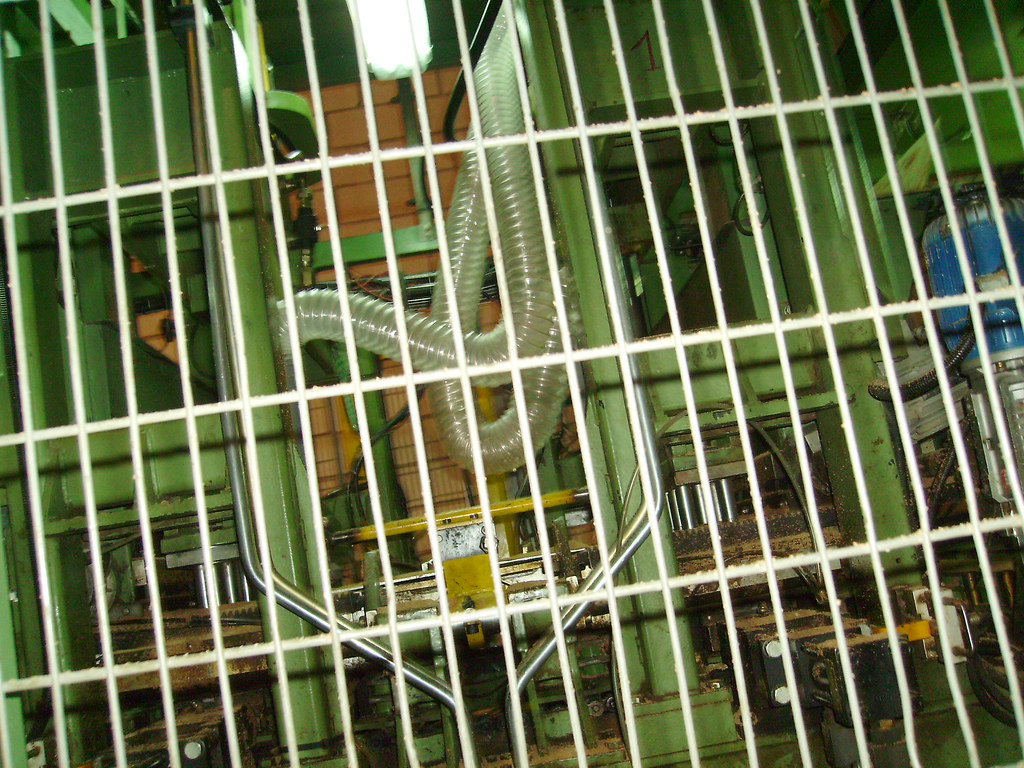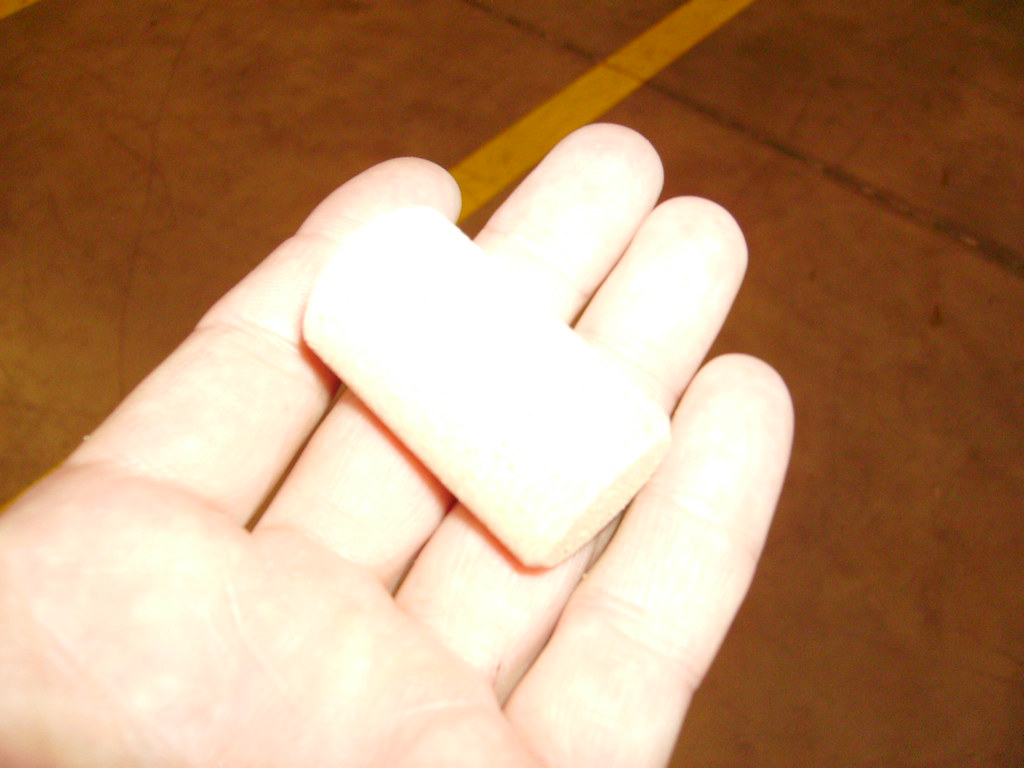Wednesday, July 16, 2008
Oeno's DIAM Closure (4) - molding and shaping
From the TCA extraction process, the treated cork flour moves via pneumatic conveyors to the next factory. Here, it is mixed with 'Microspheres' which are another patented part of the DIAM process. Basically, these are tiny polymer spheres, which when mixed with the cork and then heated expand. Once expanded, they hold their shape, but have some flexibility. They help to give their elastic properties to the closure, ensuring that after compressing, it will spring back to retain the closure in the neck of the bottle, even if the neck is somewhat irregular. Once this is correct, a very high grade, very inert polymer adhesive is added to make a coarse 'meal' which is pumped to the molding machine.
Depending on the intended use for the product, slightly different blends of the composite ingredients are used.
The molding machine is something like an automated cupcake maker. The machine packs the cork 'meal' into a series of small, cork-sized holes, and then compresses and heats it to expand the microspheres. An automated vacuum cleans up the excess from each form, and sends it to be recycled through the process. The molds travel around a conveyor to another machine which pops them out of the mold and into a bin which can be transported to the next step in the process after the corks are properly cooled. At this stage, the closures are rough, and slightly larger than their finished size will be.
The hoppers are moved to a warehouse where they cool and set. From here, they go through a machine that shapes them, polishes them, and champfers, or slightly rounds the edge of each cork. At every stage of the process, damaged, misshapen, or out-of-spec closures are kicked out of production, back into the recycling process.
Lots more photos and videos from my visit to the DIAM plant at my flickr.com site
Subscribe to:
Post Comments (Atom)




No comments:
Post a Comment